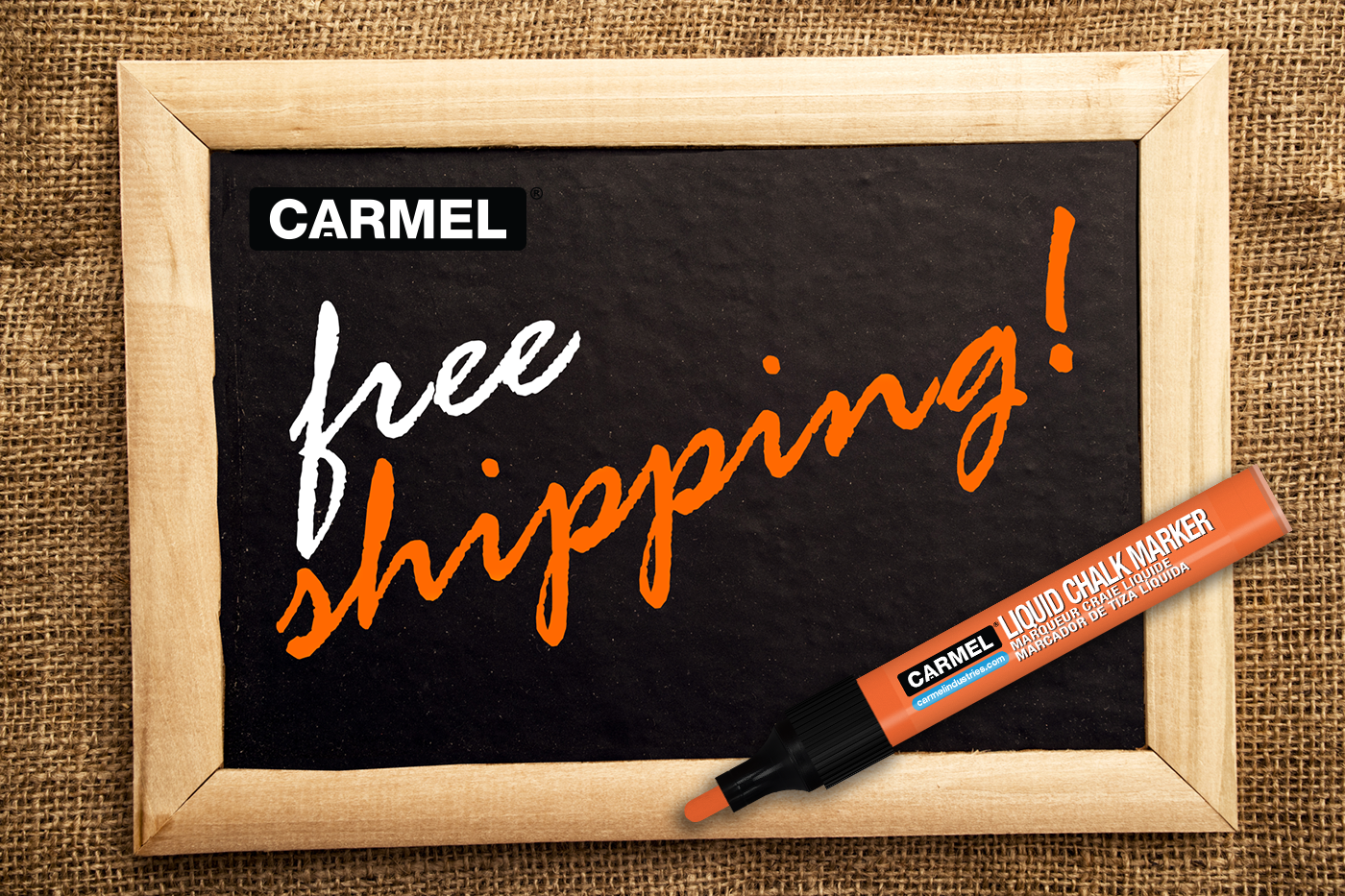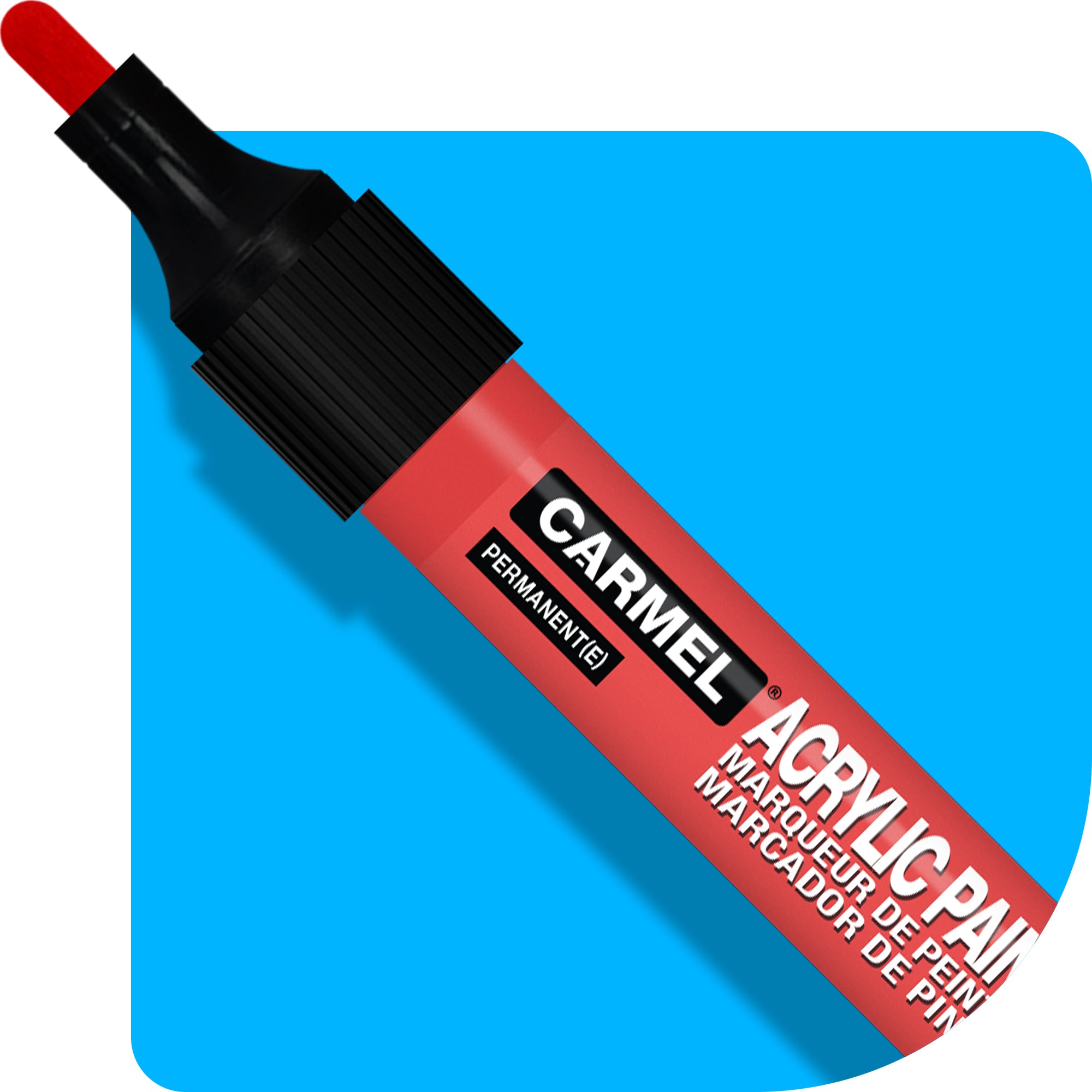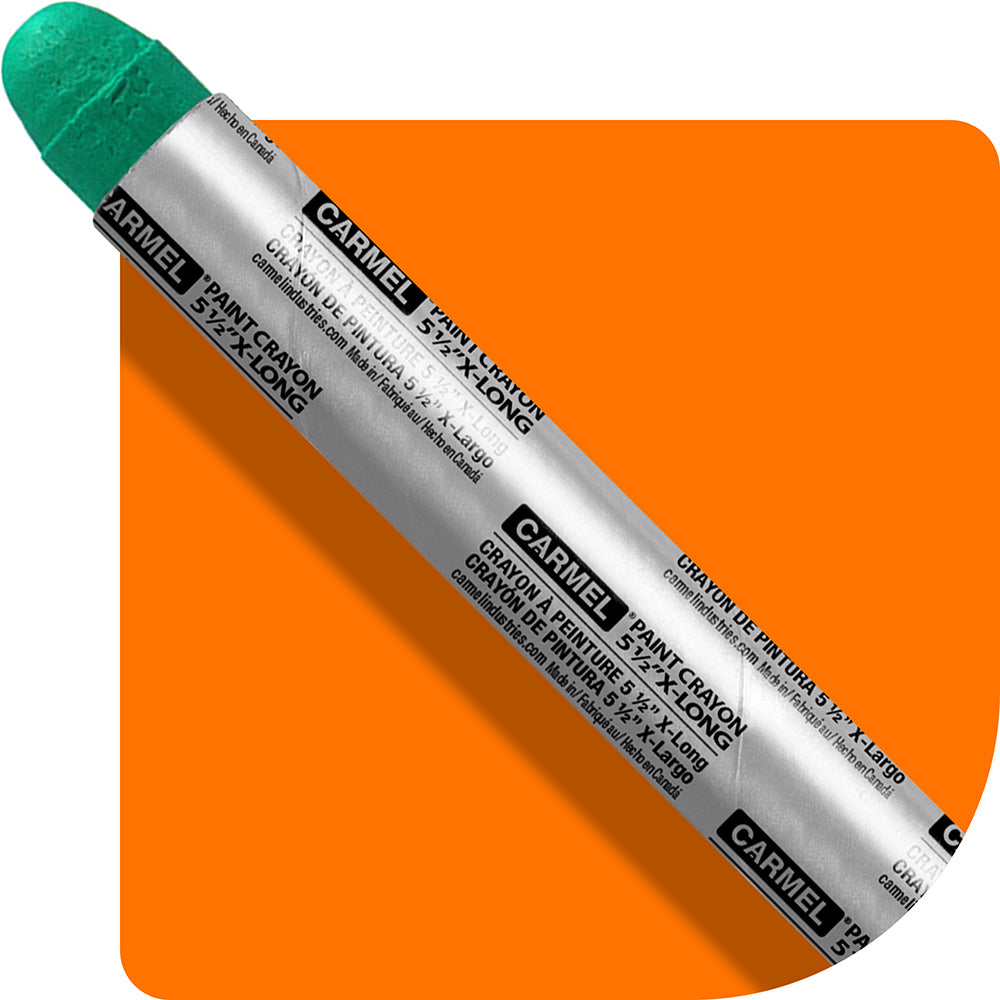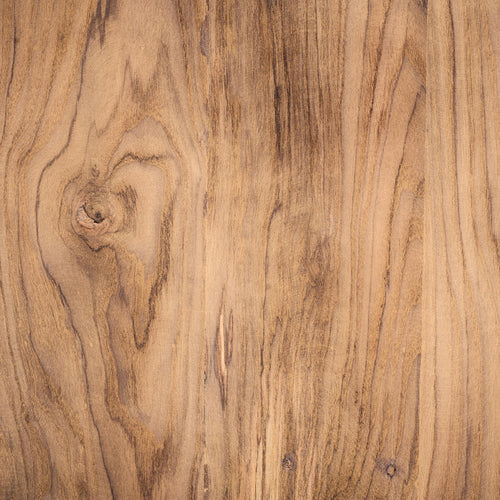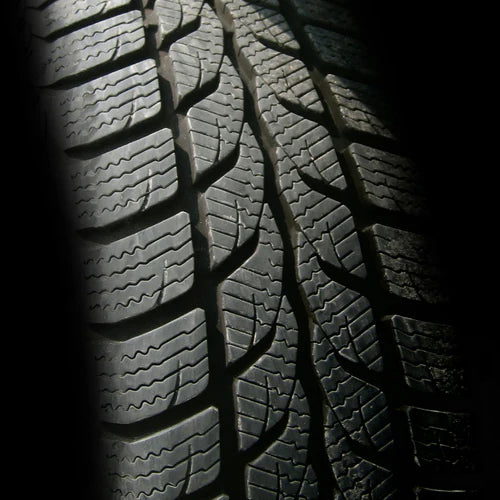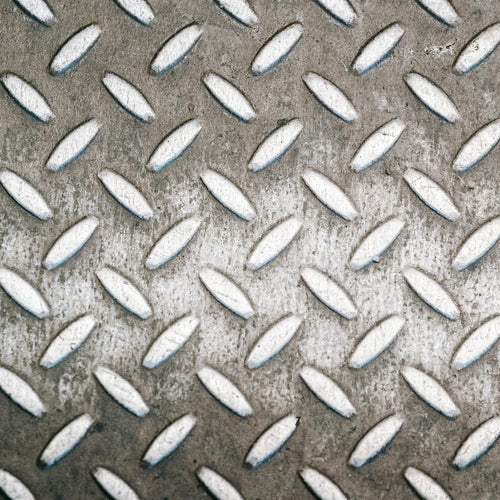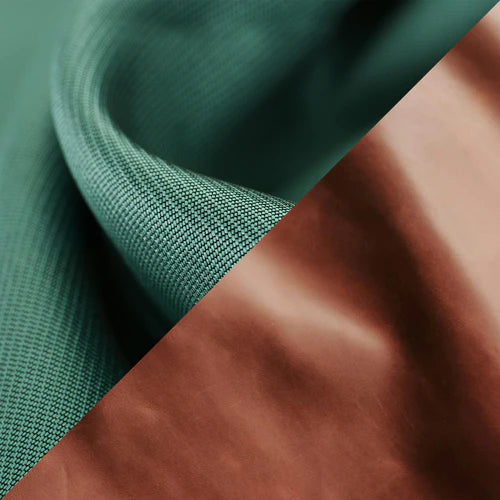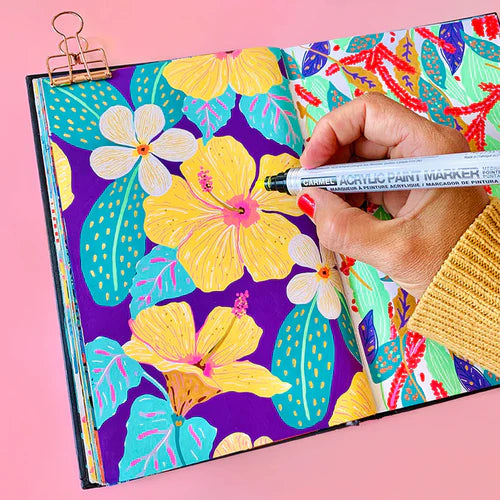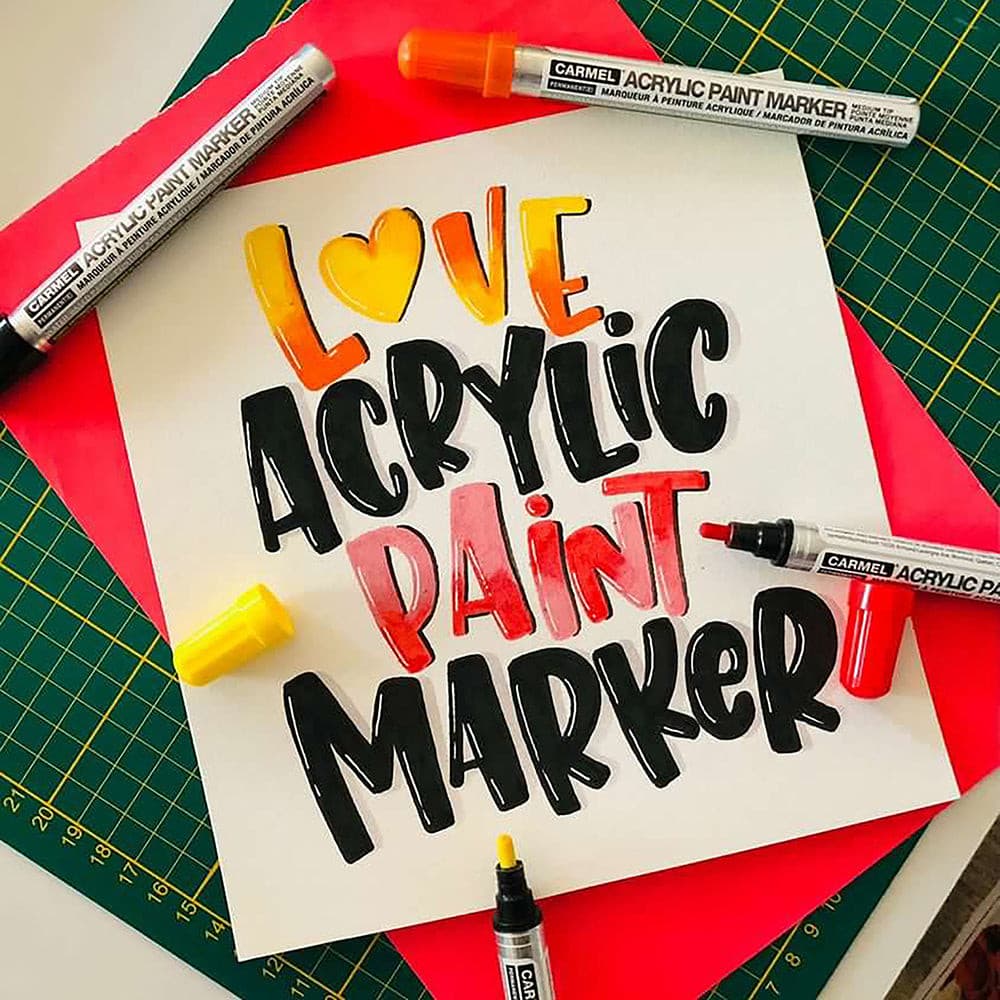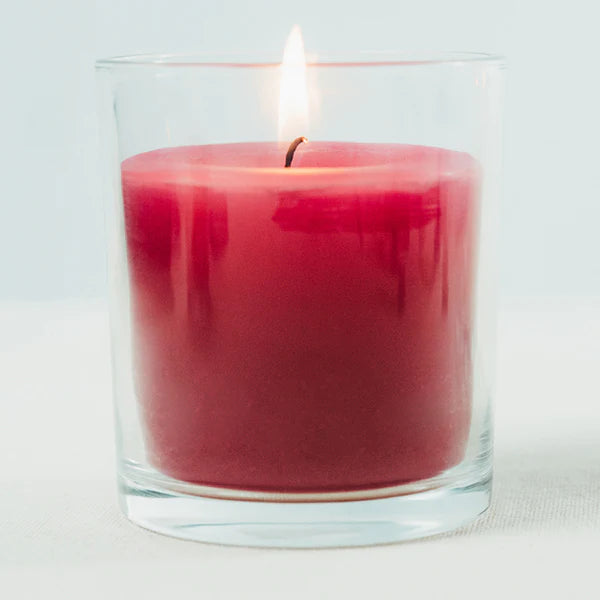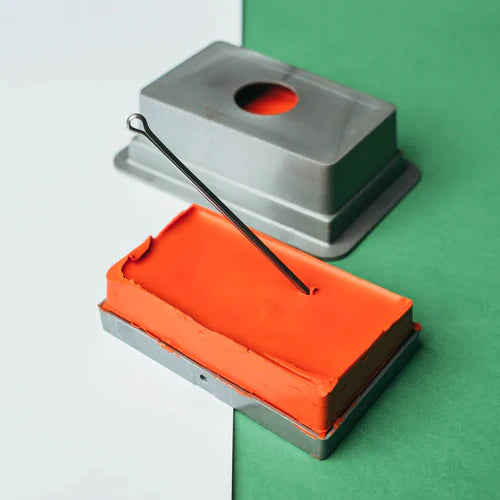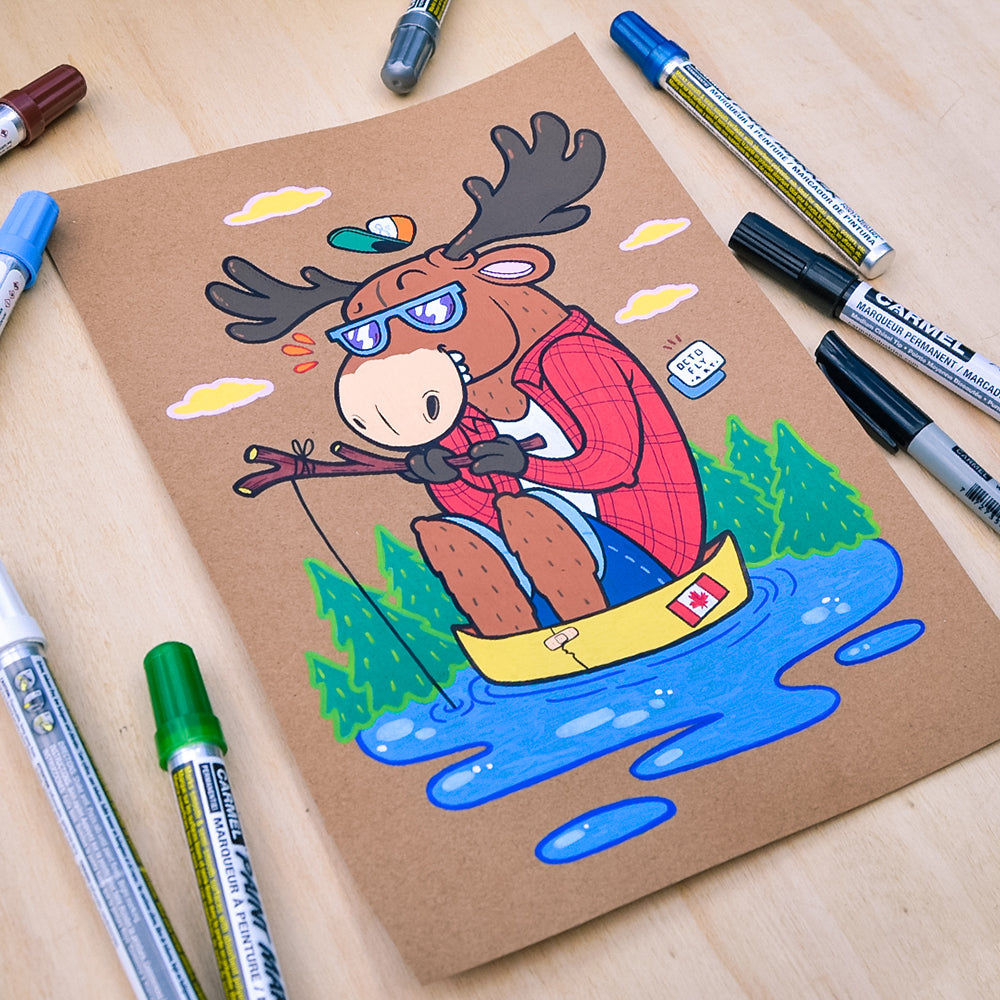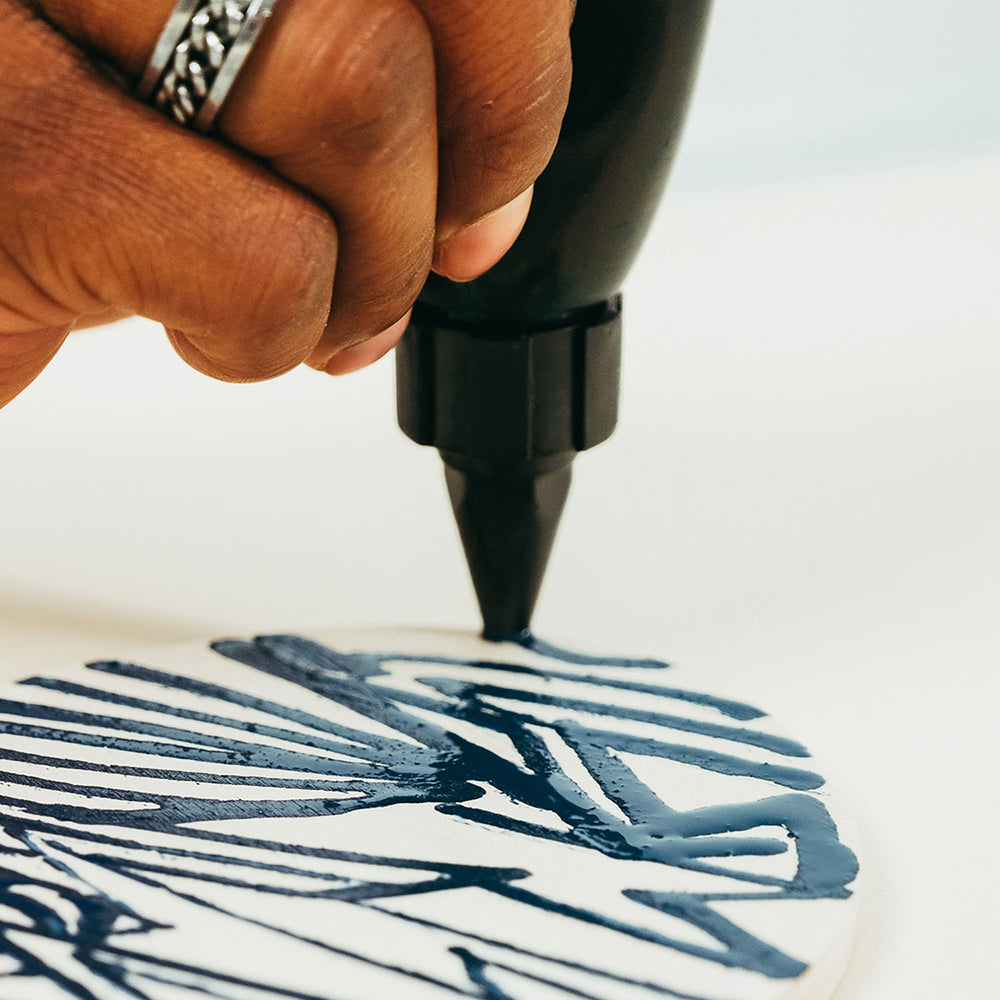Learn more about our paint crayons
The Carmel paint crayon is designed to fit any marking needs for nearly any surface and works over a very large temperature range. If you are looking for a new marking tool or are just interested in learning more about this very versatile crayon, please read our frequently asked questions section below.
How does it work?
The Carmel paint crayon begins marking by gliding the crayon over the surface to be marked with a slight pressure. This motion creates abrasion over the crayon’s tip thereby scraping away the skin (layers of solid paint) to access fresh paint contained inside the crayon. Once the skin is ground down and the fresh paint inside can be accessed, highly visible marks can be made by making a stroke on the surface. This means that marks will be consistent and that these crayons work on a wider range of materials and in a wider temperature range than nearly any marker available. These are paint based crayons, whereas lumber crayons are clay based and general marking crayons are wax based. Marks made by our paint crayons are both weather and UV resistant.
Why use paint crayons instead of normal crayons or markers?
Paint crayons apply a solid layer of paint to the surface instead of liquid paint such as paint markers. This allows paint crayons to work on a wide range of materials, including those that are dirty or oily. As these markers are solid, and do not make use of a porous tip to transfer liquid paint (such as paint markers), they do not contain nibs which may need to be replaced early due to wear. This also means that our crayons work well on rough materials like concrete. The tip will be used up over time, just like a normal crayon, and need no care, sharpening, or priming to work properly. When you use up the entire crayon simply replace it.
What surfaces do paint crayons work on?
Our paint crayons are designed to mark on metal, wood, particle board/MDF, concrete, stone, plastic, PVC, rubber, glass, cardboard, canvas, terracotta, etc. They are ideal for use on any surfaces, including rough, oily, wet, dirty or rusty surfaces, unlike other paint markers or normal crayons.
What are paint crayons' most common uses?
Paint crayons are primarily used for industrial marking needs, such as lumber, construction, and manufacturing labeling. Common applications are in steel mills and warehouses, forge and casting foundries, ship building and repair, metal fabrication, tire repair and retreading, lumber and timber industry, and construction. These solid paint crayons increase productivity in marking by removing the need for sharpening, priming, or replacing tips. They can also be used for arts and crafts and by the general public in applications such as tagging for graffiti artists.
What temperatures are ideal for paint crayons?
Carmel paint crayons mark in the temperature range of -50º to 150ºF (-46º to 66ºC). Our heat treating crayons will withstand temperatures up to 1600ºF (871ºC). Our extreme heat treating marks are removed from steel in the pickling bath prior to the galvanizing process and have a marking range of 800ºF to 1200ºF (427 to 649ºC).
How long will a crayon last me?
Crayon lifetimes will vary based on use, size and type. Rougher surfaces will consume more material, as the marks will partially fill pores on the material. Thicker marks from increased application pressure will also decrease the life of a crayon. Our crayons will not dry out like markers and will last more than long enough for their cheap cost and high utility.
Solid Paint Markers
Carmel also has a line of solid paint markers. These are very similar to paint crayons in that marking removes layers of the marker to apply paint, and reveal fresh paint below. These markers contain semi-solid paint, with a twist up end for increasing the length of the marker when it becomes worn down. These do contain fresh paint, and will last longer with use of the included air-tight cap.
Our Carmel paint crayons come in many sizes, shapes, types, and colors including standard spectrum of colors as well as fluorescent versions of most colors and metallic silver and gold. Check specific products to see exactly what colors they come in.
